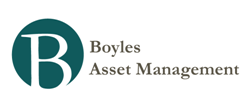The Gutenberg Economy - By Michael Lewitt
Adam Smith is spoken of as the father of modern laissez faire capitalism, as well he should be. But the market system Smith described in The Wealth of Nations (1776) no longer exists. Instead, it has morphed into a system of fiat money that owes its existence to another man: the German printer and publisher Johannes Gensfleich zur Laden zum Gutenberg (1398-1468). Gutenberg was, of course, the inventor of movable type and the modern printing press, a device without which the modern economy could not function.
As commentators near and far speculate on what 2012 will bring to the global economy and markets, there is little question that one factor will be decisive: the central banks’ printing presses. As I recently said in an interview on MSNBC, both the Federal Reserve and the European Central Bank (ECB) will keep printing dollars and euros around the clock until their presses run out of ink. This vomitoria of paper currencies is the major force driving financial markets around the world. There may be a lot of “known unknowns” to worry about, but central bank money printing is one “known” that can be taken to the bank. The only question is whether the bank will still be able to cash the check when it is asked to.
Whatever the problem, the Federal Reserve has given the same answer over the past three decades – PRINT!! The stock market crashes in 1987? PRINT!! Computers might shut off at midnight on 12/31/99 (we should have been so lucky…)? PRINT!! The Internet Stock Bubble bursts in 2001? PRINT!! The housing bubble implodes in 2008? PRINT!! Europe got into the act during the 2008 financial crisis but is now taking the art of printing money to a new level. As of the end of 2011, the ECB’s balance sheet has swollen to €2.7 trillion ($3.4 trillion), even fatter than the Federal Reserve’s $2.7 trillion. Without exception, every proposed solution to the European debt crisis involves the printing of huge amounts of money in the form of debts that can never be repaid in real terms.
- The Death Of The Dollar? – By Rob Arnott
To no one’s surprise, the Fed announced that it will replace the expiring “Operation Twist”—in which it was selling $45 billion of short maturity treasuries and buying a like amount of long maturity treasuries every month—with continued purchases...
- The Yield Hunt - By Michael Lewitt
Anyone who does not understand that the price of every stock and every bond is being artificially altered by the fact that interest rates are being manipulated by the Federal Reserve should not be risking any money in the markets. Monetary policy has...
- Hussman Weekly Market Comment: A Brief Primer On The European Crisis
With regard to the problems in Europe, investors have taken a great deal of hope from the promise of coordinated central bank "liquidity" operations in the event of deterioration. The problem here, in my view, is that whatever amount of liquidity central...
- Hussman Weekly Market Comment: Why The Ecb Won't (and Shouldn't) Just Print
Here's something to think about. When we look at any stream of payments, the value is based on the whole long-term stream, not just the benefits received in the first few years. Those of you that are familiar with the dividend discount model, for...
- Is The Medicine Worse Than The Illness? - By James Grant
Barely nudging Mr. Madoff out of the top of the news was the Federal Reserve's announcement last Tuesday that it intends to debase its own paper money. The year just ending has been a time of confusion as much as it has been of loss. But here, at...

